The palaces of Salvador de Bahia have hosted royalty, have a great history and today fulfil different functions.
Some are used for weddings, others have become beautiful museums and some await an uncertain future.
Discover the architecture and history of Salvador’s palaces
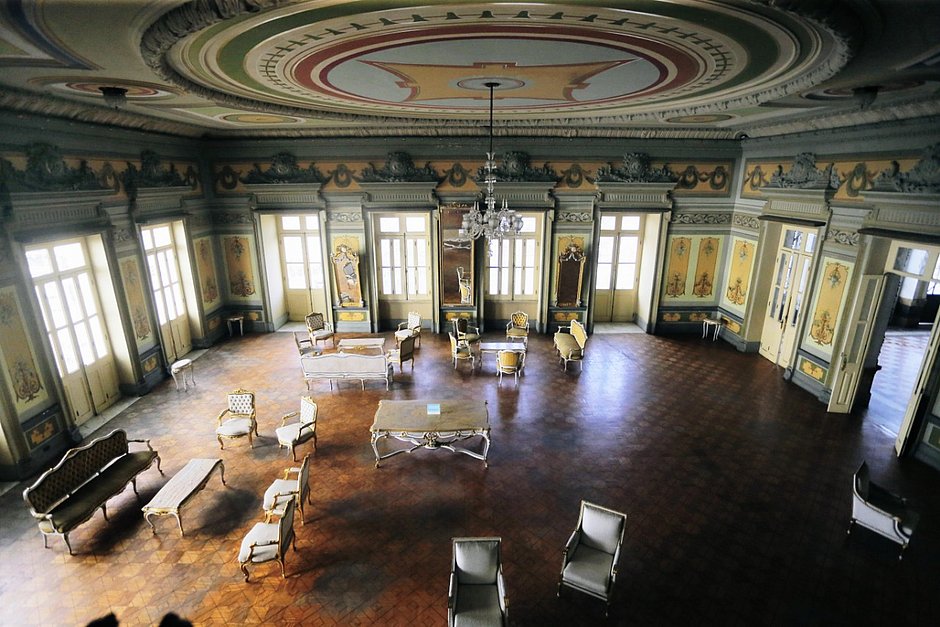

Palacio Rio Branco em Salvador09:07

Palácio Rio Branco vira hotel03:08

Palacio da Sé ou Palácio Arquiepiscopal de Salvador02:41
1. Palácio da Acclamação
Considered one of the most important museums in the city, it was once the residence of Miguel Francisco Rodrigues de Morais, a successful merchant from the city of Ponte de Lima in Portugal.
In 1912, the Palácio da Aclamação became the official residence of the governors of Bahia, with extensions designed by the Italian architect Filinto Santoro, and was officially occupied by state officials between 1917 and 1967.
Since then, the 19th-century mansion has received the governor’s despatches and even honoured visitors such as the Queen of England, Elizabeth II, in 1968.
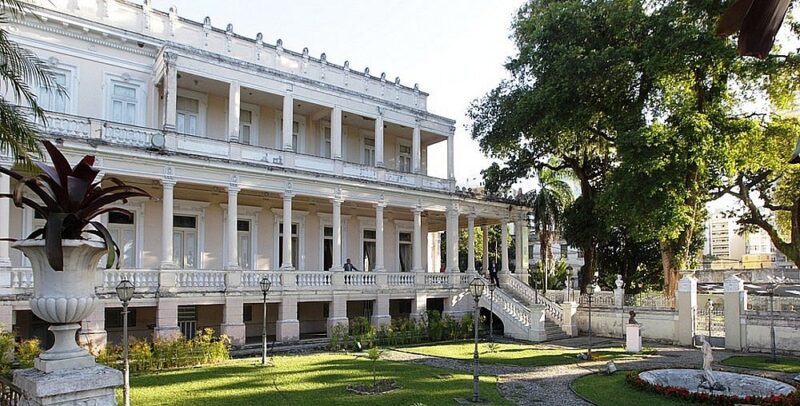
Considered one of the most important museums in the city, it was once the residence of Mr Miguel Francisco Rodrigues de Morais, a successful merchant from the city of Ponte de Lima in Portugal.
In 1912, the Palácio da Aclamação became the official residence of the governors of Bahia, with extensions designed by the Italian architect Filinto Santoro, and was officially occupied by state officials between 1917 and 1967.
Since then, the 19th-century mansion has received the governor’s dispatches and even honoured visitors such as the Queen of England, Elizabeth II, in 1968.
It became a museum in 1990 and its collection, spread over two floors, includes furniture in the style of Kings João I and Luiz XV, bronze, crystal and porcelain objects, Persian and French carpets, as well as wall and ceiling paintings by the Bahian artist Presciliano Silva.
The palace has a monumental crystal, baccarat and bronze chandelier in the Great Hall, a neoclassical lobby and a banqueting hall. On the upper floor there is a bedroom, a dining room, a chapel and a pantry.
The museum is currently being renovated and the exhibition rooms are closed to visitors.
However, some of its rooms are used for literary launches, musical performances, socio-educational activities, temporary exhibitions and fairs. It is also used for ceremonies such as weddings.
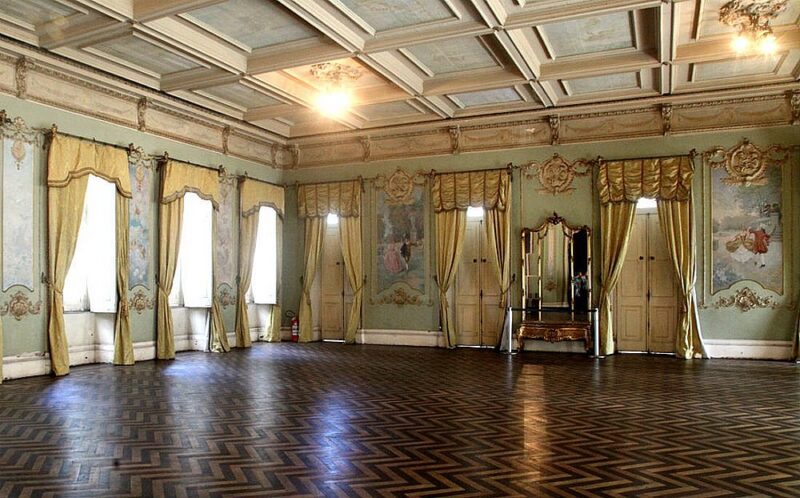
Visits: Tuesday to Sunday, from 13 to 19 (when open).
Address: Av. Sete de Setembro, 1330 – Campo Grande.
2. Rio Branco Palace
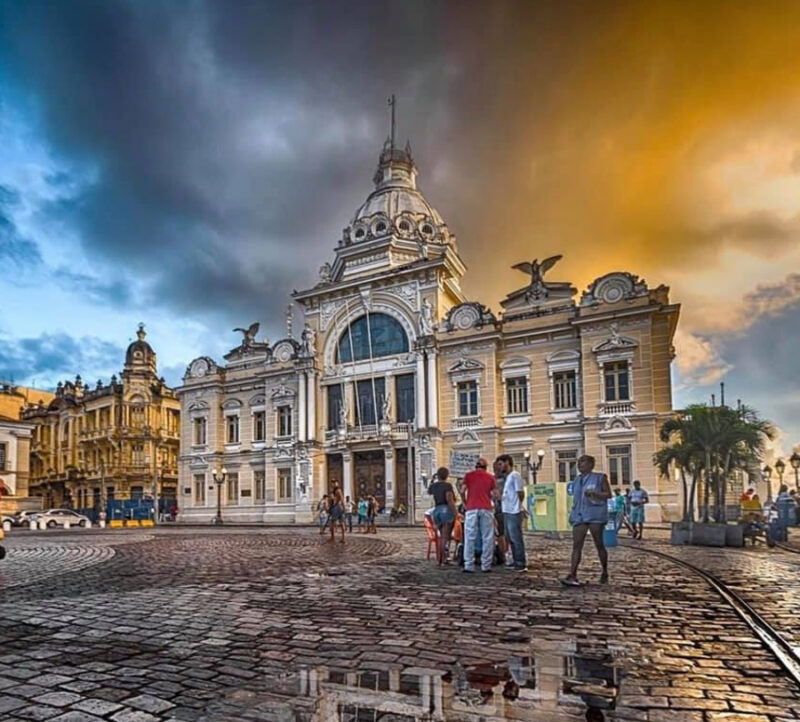
Along with the foundation of the City of Salvador, the original building was constructed in 1549 by order of Tomé de Souza as the seat of the Portuguese government.
It served as a command centre, residence and official dispatch for the great powers, such as the governors of Brazil and viceroys. It also hosted Portuguese royalty such as Emperor Pedro I, Empress Leopoldina, Emperor Pedro II and Empress Tereza Christina.
In 1912, the first and simplest building was bombed during the Dutch attack and left in ruins. In 1919, it was reopened in an eclectic style and given its current name in honour of the Baron of Rio Branco.
Since then it has been used as a barracks and a prison. It was home to the Pedro Calmon Foundation and now houses the Bahia State Secretariat of Culture, with its rich decoration and valuable works of art.
It also houses the Memorial of the Governors, an important part of the construction of the State’s history.
It contains diplomas, letters, daggers, insignia, swords, city keys, crystals, crockery, books, medals, photographs and personal items such as pens, ashtrays and letter openers, all donated by family members.
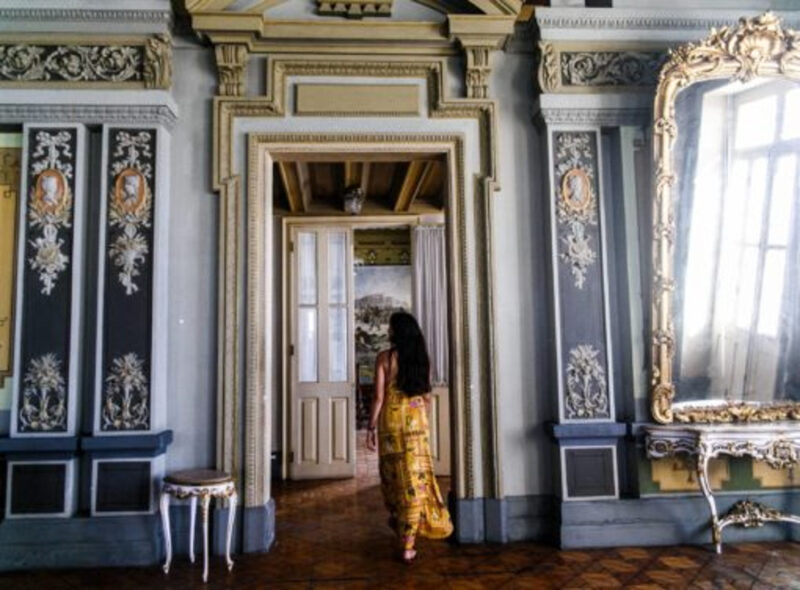
Curiosities and rarities of the Rio Branco Palace
1. Louis XV gilded furniture
Armchairs, coffee tables, sideboards, side tables, chairs and armchairs are still on display in the Great Hall.
2. French crystal mirrors
Framed in plaster painted with gold leaf and French bevelled mirrors.
3. Pompeii Room
The Pompeii Room is the oldest, having survived the fire of 1911 and the bombing of 1912 – it is a tribute to the civilisation of Pompeii, with frescoes and canvases framed by Greek beams – one of which depicts the mythological Bacchante – priestess of Bacchus.
4. Movable Property Collection
1845 objects – Most of them are personal belongings of Bahia’s rulers, given to them by their families. Of these 1845 objects, only 46 are included in the Pedro Calmon Foundation’s inventory of movable property. They are: 19 armchairs, 06 mirrors, 05 sideboards, 03 coffee tables, 02 murals (one of them – The First Step towards Independence – signed by Antônio Parreiras, from 1930), 01 table and 10 chairs.
The Pedro Calmon Foundation was created in 1986 with the aim of collecting, researching and disseminating the historical and documentary collection of Bahia’s socio-political memory.
5. The Rio Branco Palace will become a super luxury hotel.
The Governor’s Memorial will be kept in its own room in the Rio Branco Palace Hotel, under the custody of the Pedro Calmon Foundation, and that the other issues are being studied and will be announced when they receive the property.
Address: Praça Tomé de Souza, S/N – Centre.
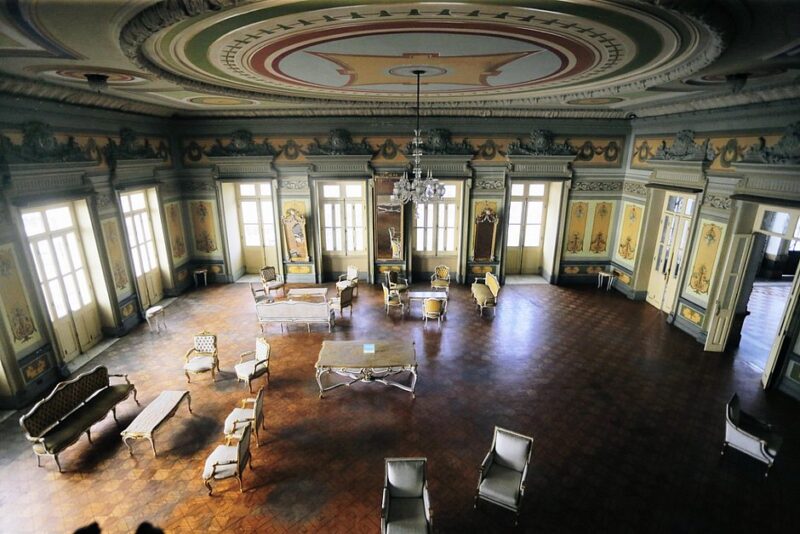
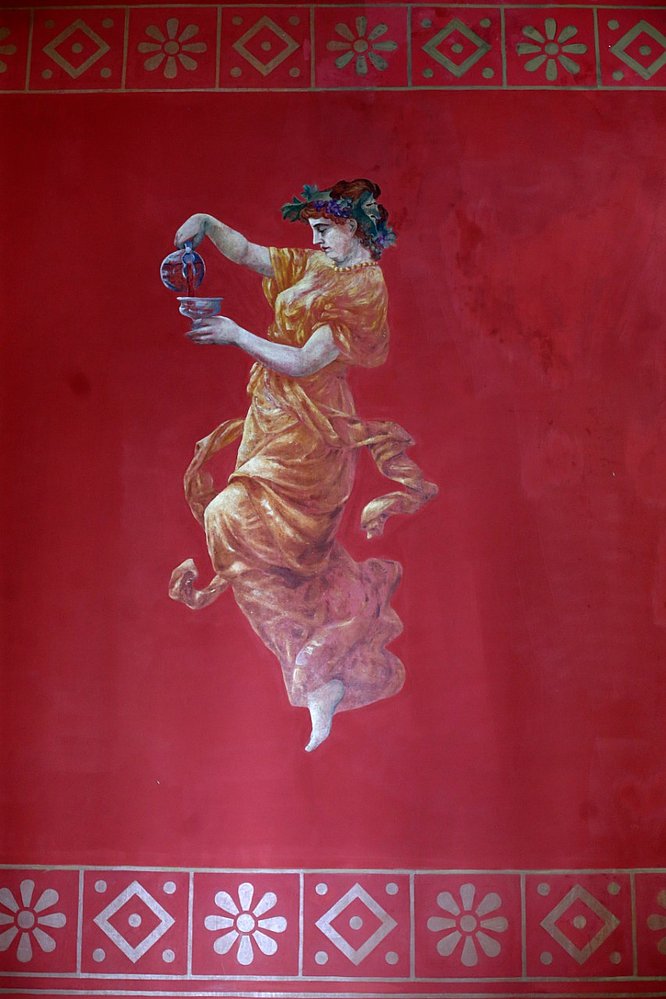
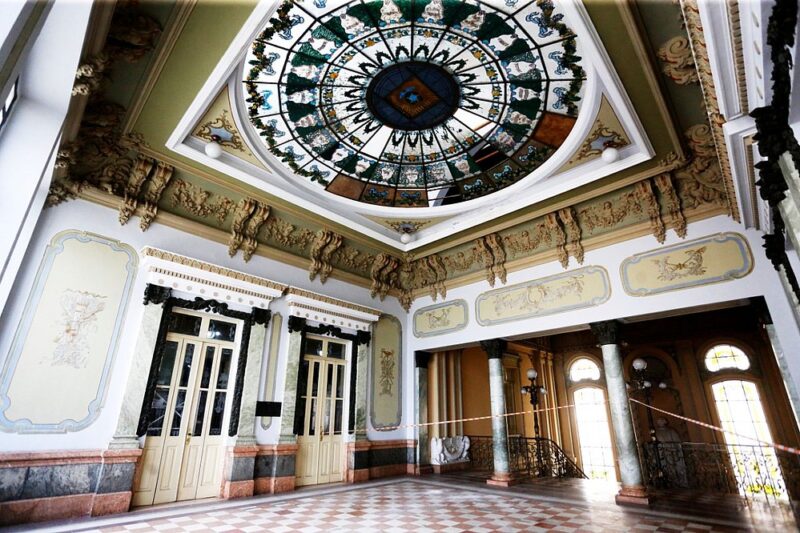
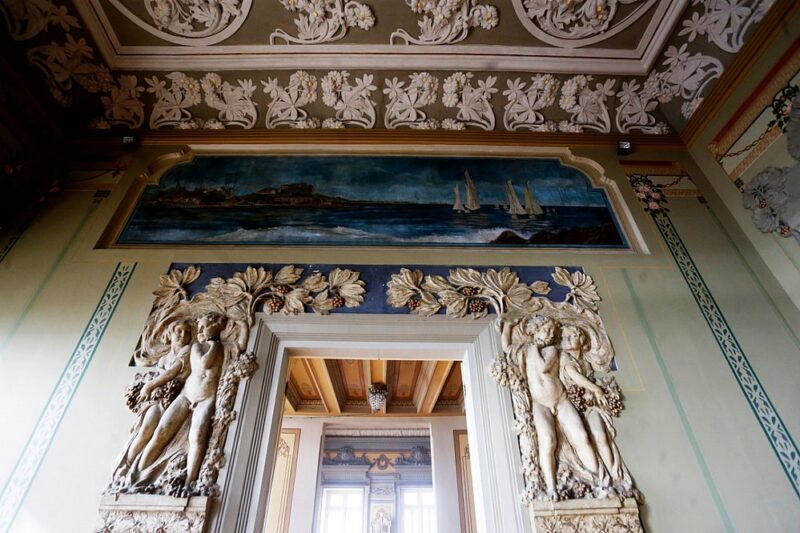

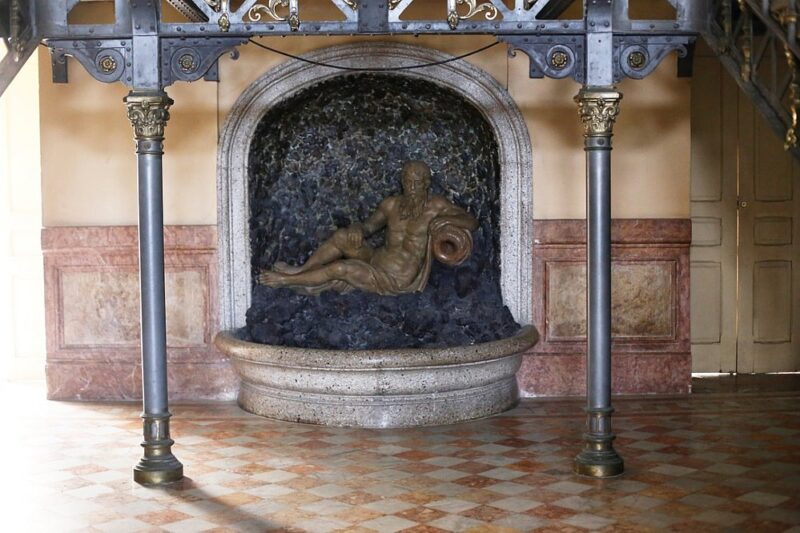
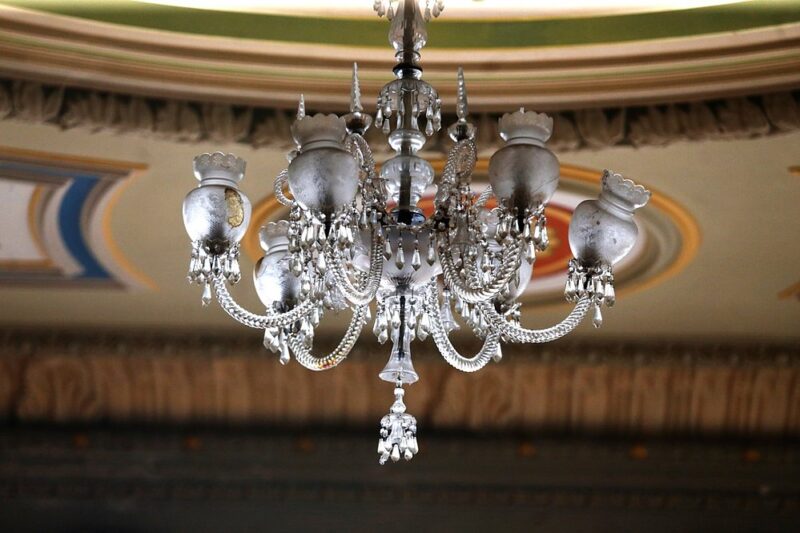
3. Archiepiscopal Palace of Salvador or Sé Palace
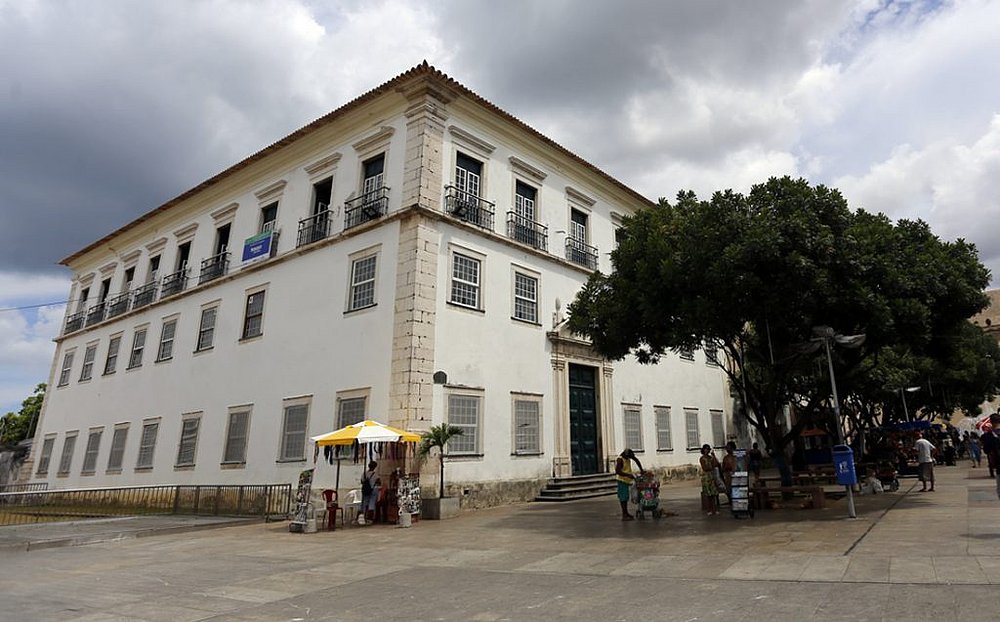
Built in the 18th century around a courtyard and located in the historic centre of Salvador, this building is considered one of the best examples of colonial civil architecture in the country. Also known as the Sé Palace, it was originally designed as a residence for archbishops.
The building has three floors and four bodies. The entrance is marked by a Portuguese lioz stone portal decorated with the coat of arms of D. Sebastião Monteiro da Vide, Archbishop of Salvador at the time.
Inside, the influence of Italian Renaissance palace architecture is evident, with two superimposed galleries leading to a central courtyard.
The palace was the administrative and pastoral centre of the Catholic Church in Brazil for more than 100 years, and was reopened in December 2019 after restoration work.
After the intervention of the Brazilian Institute of Historical and Artistic Heritage (IPHAN) in 1938, the space houses the Reference Centre for the History of the Catholic Church in Brazil.
In addition to its own collections and historical artefacts from other religious buildings, it has a room for the Rector Eugênio Veiga Conservation and Restoration Laboratory (LEV), with a collection of more than 16,000 restored historical documents.
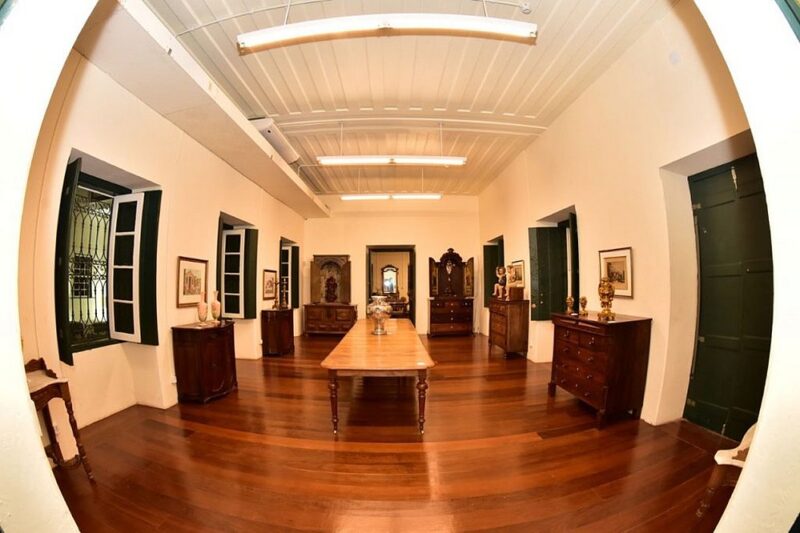
Address: Praça da Sé, 203-47 – Pelourinho, Salvador – BA, 40020-210
4. Solar Santo Antônio House Museum
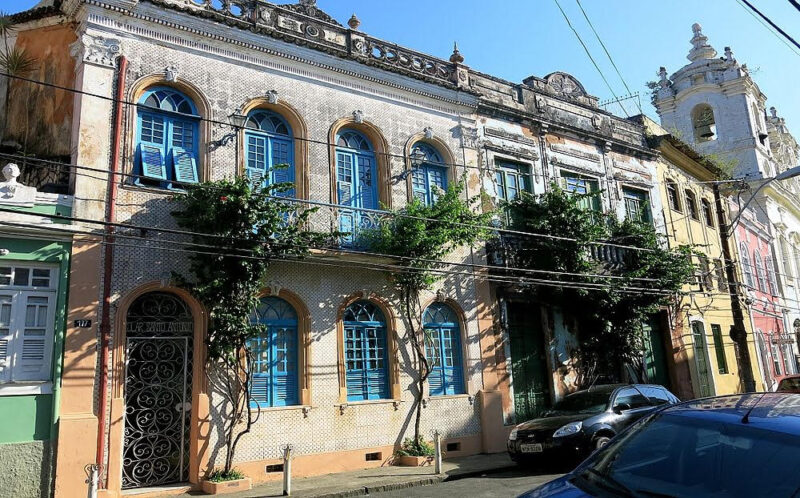
Although it’s not called a palace, this exotic house is very reminiscent of imperial styles. It has been turned into a museum and houses more than 4,000 works by the Marchand artist Dimitri Ganzelevitch. The spacious 19th century building is full of art, books and nature.
With a special terrace overlooking the bay of Todos-os-Santos, it has a limited collection of great importance and quality. You can also stay here, as it’s also a hotel.
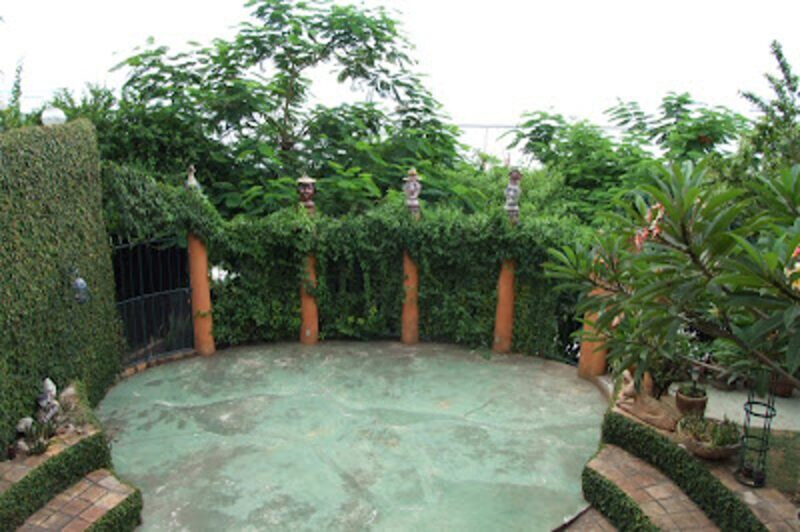
Visits: possible by appointment (different days).
Address: R. Direita de Santo Antônio, 177 – Santo Antônio Além do Carmo.
5. Sports Palace
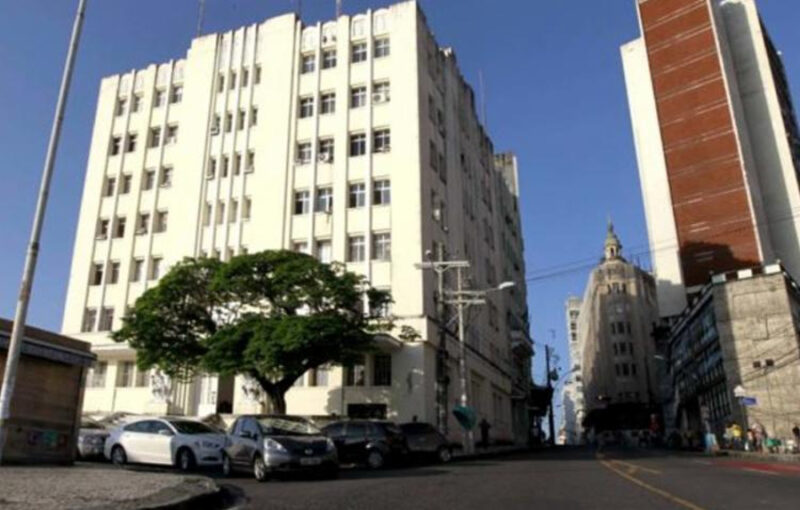
When it was built around 1806, the Sports Palace represented a real revolution in the architectural style of buildings in the Americas.
After its foundation, it housed the São João Theatre and was the stage for events aimed at Bahian society, such as poetry recitals and public and political debates. Ruy Barbosa, J.J. Seabra and Otávio Mangabeira were among those who frequented the theatre.
The building was destroyed by fire in 1923. The current building, built in the 1930s in the Art Deco style, became the headquarters of the Secretary of State for Agriculture. Later, the governor at the time, ACM, christened it the Sports Palace and it became the headquarters of the sports federations.
Unfortunately or fortunately, the Government of Bahia has submitted a request to the Legislative Assembly (Alba) to sell the building, christened the Sports Palace, for the construction of a tourist resort, arguing that the money raised will go to the State Treasury.
The building currently houses the Municipal Sports Department, which, according to Decree 16.026, is responsible for formulating and implementing sports, leisure and entertainment policies, seeking to integrate its activities with those of culture, education, social welfare, health, peace promotion and others.
Opening hours: Monday to Friday, from 9am to 7pm.
Address: Praça Castro Alves, 01 – Centro.
Tourism and travel guide to Bahia and the Northeast – Palaces in Salvador
Publicações Relacionadas
Solar do Unhão and the Museum of Modern Art in Salvador BA
Convent and Church of Santa Teresa and its History
History of the Forts and Lighthouses of Salvador
Tourist attractions for children in Salvador de Bahia
History of the Church of São Pedro dos Clérigos in Salvador
Discover the 23 wonderful beaches of Salvador de Bahia
History of the Founding of Salvador de Bahia
Attractions in the Historic Center of Salvador de Bahia
Bahia Art Museum (MAB): Learn about its history and collection
Rio Vermelho Neighbourhood in Salvador's Nightlife
History of the São Marcelo Fort or Forte do Mar in Salvador
Exploring the Architectural Marvels: Churches of Salvador
Nossa Senhora dos Mares Church: Gothic Architecture
Tourist attractions and architectural heritage in Salvador de Bahia
Prostitution, Sex, Bars and Nightclubs in Salvador de Bahia
Discover the Charm of Parks and Squares in Salvador de Bahia
Discovering the Origins of the Senhor do Bonfim Ribbons
Ponta de Humaitá is one of the most charming places in Salvador
This post is also on:
![]() Português
Português ![]() English
English ![]() Deutsch
Deutsch ![]() Español
Español ![]() Français
Français



















